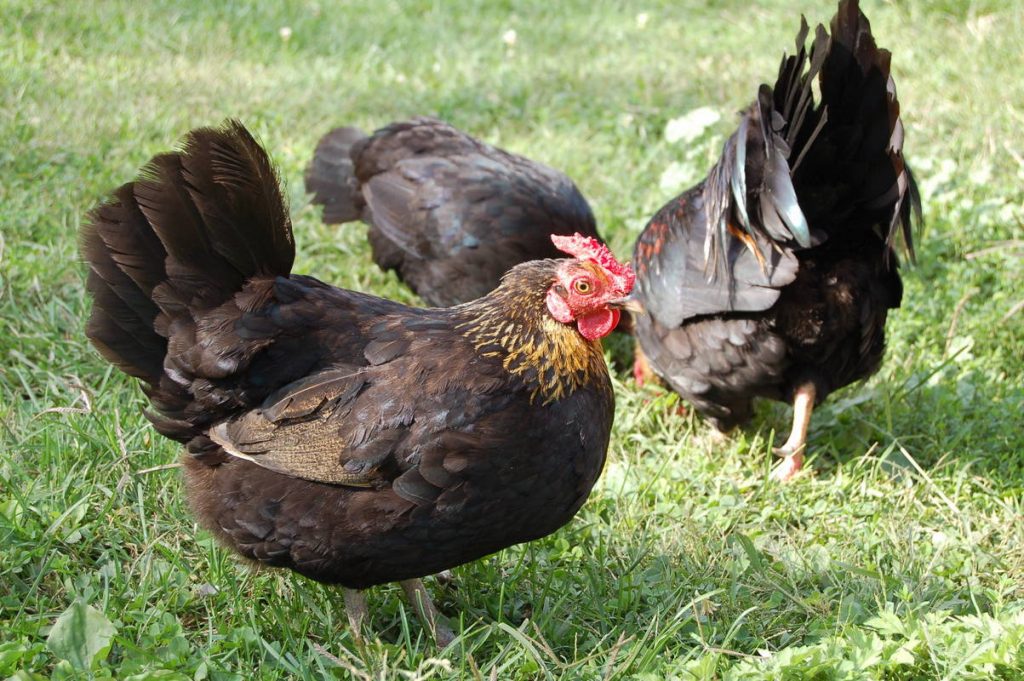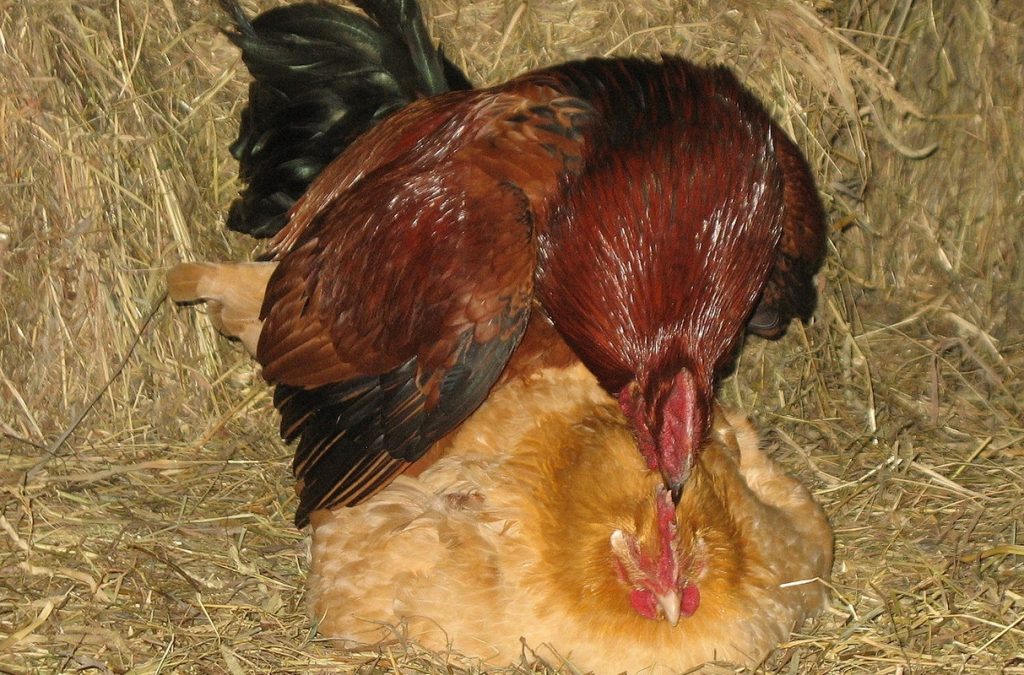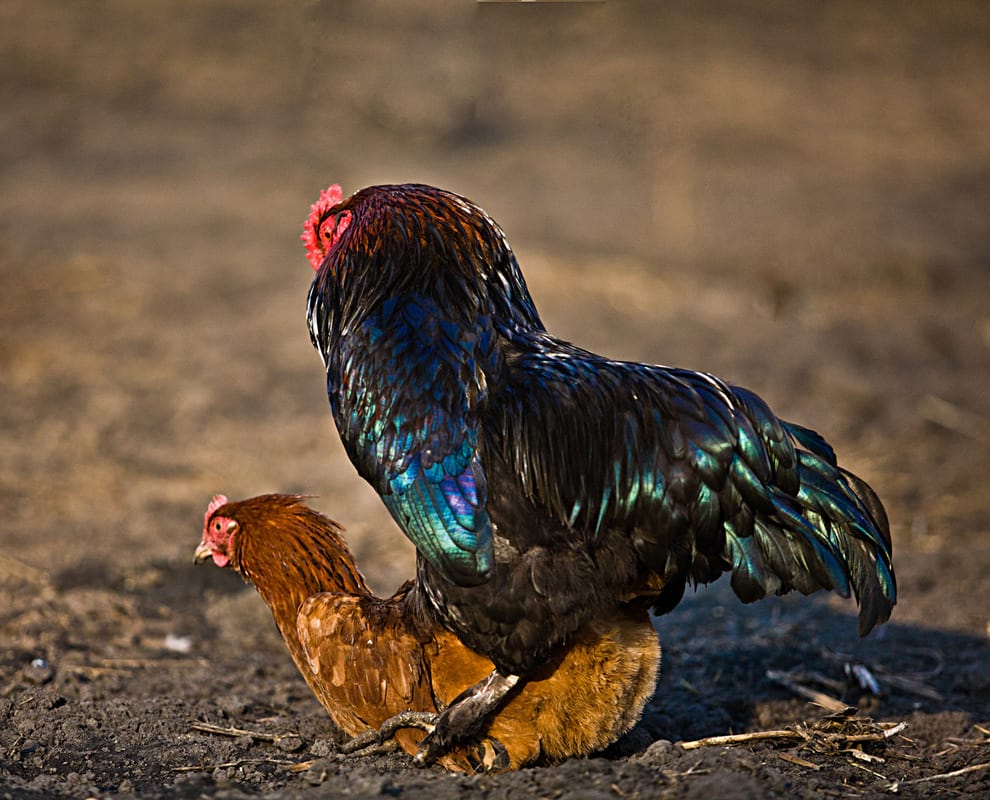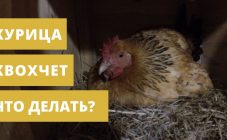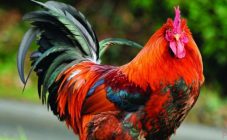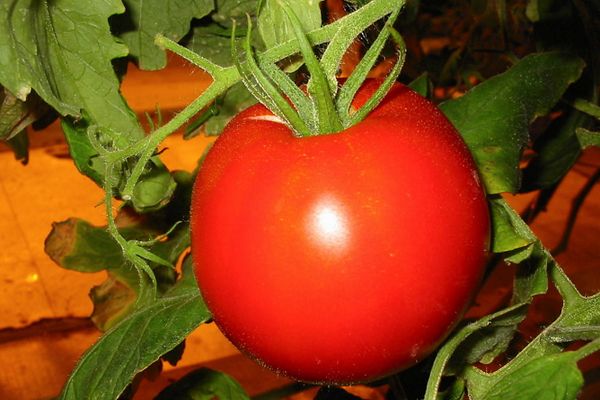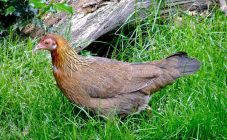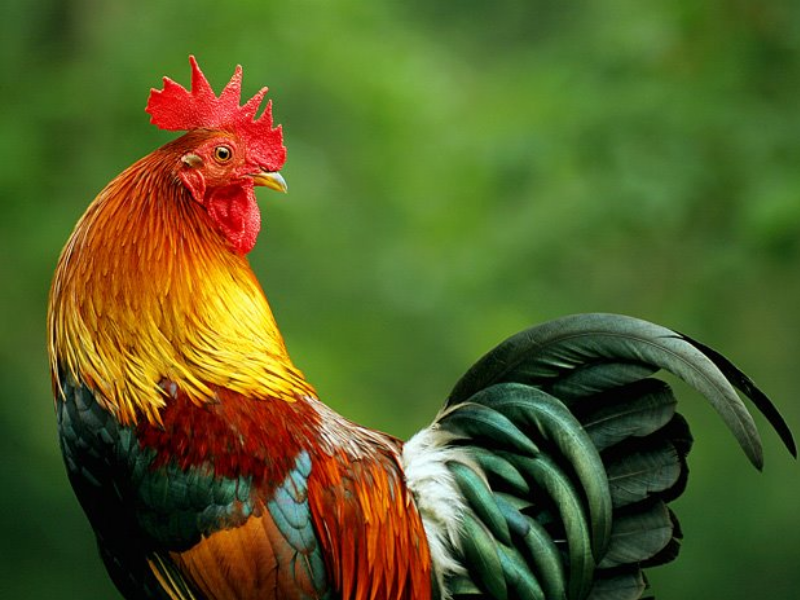Content:
The hen, like all other birds, lays and then incubates eggs. Nevertheless, the breeding process is much more complicated than it seems at first glance. Those who decide to start breeding and raising chickens need to know as much as possible about this process. First of all, you need to find out the role of the rooster in this process and whether chickens can lay without a rooster.
The role of the rooster in the chicken coop
So does a rooster need a hen to lay eggs? There is no definite answer to this question. Everything will depend on what goal the poultry farmer sets for himself when starting to breed chickens.
A hen does not need a rooster to lay eggs. She can handle it herself. In large poultry farms and poultry farms, laying hens are raised separately from roosters. Each day, the hen produces one testicle. Then these eggs are packaged and sent for sale.
The female produces eggs every day, regardless of the presence of a male. The difference is that in its absence, the egg remains unfertilized. Passing through the oviduct, it also becomes overgrown with protein, the shell membrane, and finally, the shell. At first glance, an ordinary full-fledged egg comes out. This egg is missing only one thing - the embryo.
If the owner of a small backyard has one goal to get fresh eggs, then there is no need for a rooster. Moreover, it will only bring additional trouble. The fact is that when a hen lays a fertilized egg, instinct dictates that she must breed offspring from it. As soon as the laid egg is in the nest, the hen sits on it and begins to incubate it. And it is often not easy to drive her out of the nest.
It is another matter when the farm is designed to breed poultry on its own. In this case, the farm cannot do without a rooster.
How chickens breed
Chickens and males reach sexual maturity at about the same time, and their first mating occurs after 25 weeks after they hatch from the egg. But this is on average. The age of puberty depends on the breed. Large specimens of the meat breed mature a little later than egg-laying ones. The sexual activity of males also depends on the breed. A "meat" cockerel can mate with ten chickens, for him a maximum of 20 females are kept in the hen house. For an egg breed cockerel, you can keep up to 25 chickens.
Young males are usually less determined, and when the older male is in the pen, the advantage will be on his side. He will trample the females.
Having figured out whether chickens rush without a rooster, you need to decide how many males to run into the chicken coop. The optimal ratio of females and males is 10: 1. If there are more than ten females, the likelihood increases that some chickens will carry pacifiers.
In order for the number of flocks to be constant, while guaranteeing a high degree of fertilization of eggs, it is necessary to experimentally establish the required number of roosters in the flock. It has long been noticed by those who are engaged in poultry farming: if you observe the recommended ratio of males and females in a hen house, layers feel much calmer. And if they feel a masculine presence, egg production increases.
How a rooster fertilizes a hen
Until now, scientists have not come to a consensus on the question of whether the rooster has a reproductive organ. The search for arguments in favor of this or that assumption continues in our time. And how, with this (or without "this"), one rooster is able to satisfy more than a dozen hens?
Strictly speaking, the rooster still has a genital organ, nature has endowed the male with genitals, but they can be seen only in a chicken embryo and only in an embryonic, rudimentary state. But how, then, does the rooster trample the chicken?
On the back of chickens there is a special hole for conception. The rooster sits down on top of the chicken and touches its feathers with its feet, looking for this hole. At this time, he holds the female by the back of the head with his beak. Sexual intercourse in birds occurs quickly, within only a few seconds. A rooster can mate many times a day.
Throughout the year, the potency of the rooster is almost unchanged. Only during the molting period does he stop trampling the chickens.
The rooster's genitals are small testes. Thin canals extend from them, which end in a cloaca. The sperm are released through the small nipple.
The chicken reproduction system consists of an uviform ovary, which is located on the right side, and an oviduct, which ends in the middle section of the cloaca. The ovary serves for the formation and maturation of future egg yolks.
At the time when the rooster tramples on the hen, their cloacas are connected. In the male, the cloaca turns outward and the sperm thus enter the female. After a hen has mated with a rooster, semen can remain active in her genital tract for up to 20 days. The egg, which at this time has already matured, leaves the oviduct and fertilization takes place there. In the female gamete there is a small tubercle, through which the sperm enters the egg. During this process, the tail of the sperm is separated, leaving only the head inside the egg.
A large number of spermatozoa enter the chicken, but only one of them connects to the female gamete. Others, within three weeks after the hens are fertilized by the rooster, can do the same.
Everyone knows that chickens hatch from an egg. However, not everyone guesses why it is not always possible to get offspring from an ordinary chicken egg. Which egg should be placed under the hen or incubator?
To answer this question, you need to know some of the signs of vital activity and the formation of the embryo. In the arsenal of an experienced poultry farmer, there are many ways to deal with this problem.
The safest way to select eggs suitable for brooding or incubation is with an ovoscope. This apparatus is a container in which cells for laying eggs are located. The bottom of this container is equipped with illumination, with which the contents of the egg are determined.
Earlier than on the sixth day after the start of incubation, it will not be possible to determine the presence of an embryo in the egg.If you enlighten him before this time, you can see only a darkened area without clear outlines about the size of a match head. If you turn the egg horizontally, it will follow the yolk, while slightly lagging behind the speed of rotation of the egg. If the outline of this area is more expressive, so that it looks like the letter "O", we can say with some degree of probability that the egg is fertilized.
On the seventh day, the presence of an embryo in an egg can be determined more confidently. At this time, at its thin end, you can see the blood vessels formed around the yolk. The air chamber is also clearly visible. The germ disc becomes more and more visible and looks like a dark spot. When chaotically located blood spots are observed in the egg, this is a sure sign that either it was unfertilized or the embryo died.
On the tenth day of incubation, you can accurately determine whether the chick is alive. If its development proceeds normally, the color of the yolk becomes more and more pale. The vital activity of the embryo involves air exchange, and a pale yellow ring forms around it. The embryo at this time is a dark spot with a fairly clear outline. The fetal heartbeat can be heard through a stethoscope after 18 days.
Is it possible to determine the fertilization of an egg before its incubation?
This can be done without much effort. It will only be necessary to donate two, and preferably three dozen eggs. They must be broken into a clean dish so that the yolk is oriented with the embryo upwards. In a broken egg, the differences between a fertilized one and an unfertilized one are obvious. They, of course, will not go either to the incubator or under the hen, but it will be known about the fertilization of the eggs of the entire batch.
Can a rooster lay an egg?
As a rule, the owners of the bird are more concerned with the question of whether chickens rush without a rooster. Nevertheless, modern science has not only established the very fact of the egg production of a rooster, it has experimentally achieved the possibility of turning roosters into hens and, conversely, chickens into roosters.
The development of sexual characteristics in birds is influenced by some hormones that are produced by the endocrine glands. If these glands are damaged or removed, the bird loses all signs of its sex.
When the ovaries were removed from the chickens, they quickly lost all the external signs of their sex, they began to look more like roosters. Their crest has increased, tail feathers and necks have lengthened, and even small spurs have grown. When they were then implanted with the testes removed from the males, the chickens crowed like cocks. The same was done with the roosters, but in the reverse order. They were transplanted ovaries removed from females and they turned into chickens that could lay eggs as females.
Thus, science has proven that it is possible to change the sex of a bird by surgery. Moreover, the scheme of such a change is quite simple. But cases of gender degeneration in nature often happen without the intervention of a surgeon. The last known case of such a rebirth occurred quite recently, already in the third millennium.
Recent tragic events in northern Italy, in the province of Tuscany, led to the fact that a rooster turned into a chicken. A fox sneaked into one of the farms in this province at night and, as usual, strangled all the chickens. Miraculously, only one rooster survived. As a result of the stress experienced in his body, such changes occurred that after a while he began not only to lay eggs, but also tried to hatch them.
Biological science has long known similar facts among plants and some invertebrates. Among the birds, the Tuscan rooster was the first.
So, having figured out whether a hen can lay eggs without a rooster, it is not difficult to organize the necessary conditions for the poultry.
